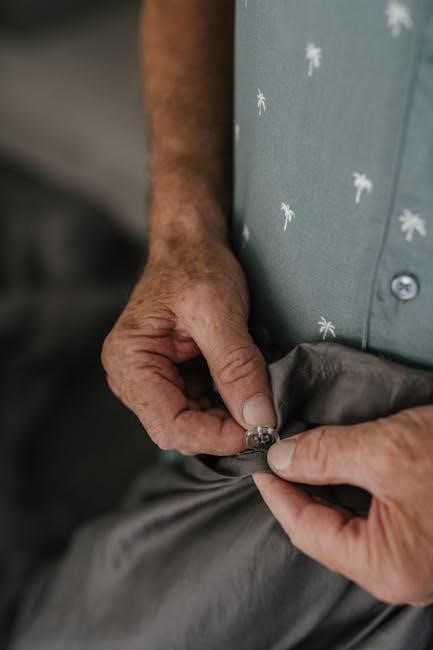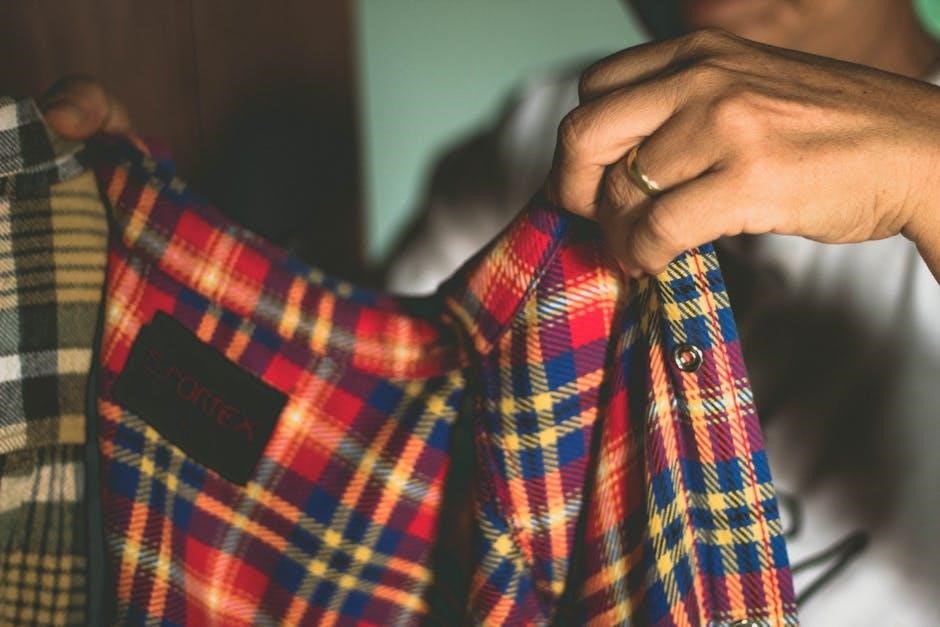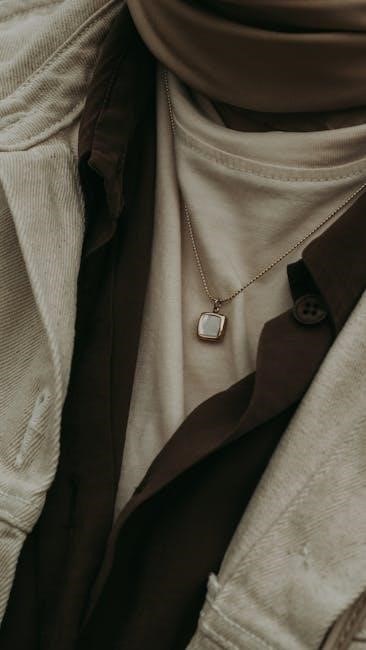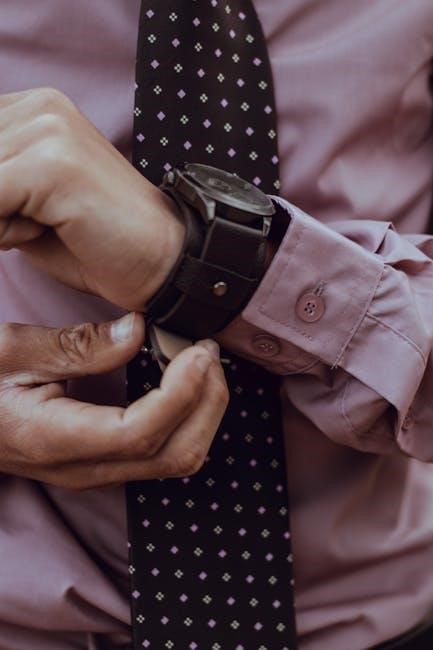Button-Up Shirt Size Guide: Finding the Perfect Fit
A button-up shirt is a must-have wardrobe staple for both men and women. Finding the perfect fit can be tricky, especially when shopping online. This guide breaks down button-up shirt sizing, ensuring a confident shopping experience and the perfect fit every time.
Understanding Button-Up Shirt Sizes
Navigating the world of button-up shirt sizes can feel like deciphering a secret code. Unlike simple t-shirt sizes (S, M, L), button-up shirts often involve a combination of measurements, typically including neck size and sleeve length for men; Women’s button-up shirts usually follow standard dress sizes (e.g., 2, 4, 6) or sizes like XS, S, M, L, XL, and sometimes XXL. However, understanding these labels is only the first step.
The key is recognizing that these sizes are not standardized across all brands. One brand’s “Medium” might fit differently from another’s. This inconsistency arises from variations in design, cut, and the target body type for each brand. Some brands cater to a more athletic build, while others focus on a slimmer or more relaxed fit.
Therefore, relying solely on the size label is a recipe for potential disappointment. To truly understand button-up shirt sizes, you must delve into the specific measurements provided by the brand, usually in the form of a size chart. This chart will correlate body measurements like neck circumference, chest width, and sleeve length with the corresponding shirt size offered by that particular brand.
Key Measurements for Men’s Shirts: Neck, Chest, and Sleeve Length
For men’s button-up shirts, three key measurements reign supreme: neck size, chest circumference, and sleeve length. These measurements determine the overall fit and comfort of the shirt. Neglecting even one can lead to an ill-fitting garment that restricts movement or looks disproportionate.
Neck Size: This measurement dictates the comfort around the collar. Measure around the base of your neck, where the collar typically sits. Insert two fingers between the measuring tape and your neck to ensure a comfortable fit that’s not too tight. Round up to the nearest half-inch.
Chest Circumference: Measure around the fullest part of your chest, keeping the measuring tape parallel to the ground. Ensure the tape isn’t too tight; allow for a comfortable breathing space.
Sleeve Length: Extend your arm straight out to the side, slightly bent. Measure from the center of the back of your neck (where a shirt tag would be) over the shoulder and down to the wrist bone. Alternatively, have someone measure from the shoulder seam down to the cuff.
Accurate measurements are crucial. Use a flexible measuring tape and get assistance for the sleeve measurement if possible.
Using a Men’s Shirt Size Chart (Inches and Centimeters)
Men’s shirt size charts are essential tools for finding the right fit, translating measurements into standard sizes. These charts typically display sizes in both inches and centimeters, catering to diverse preferences and measurement systems. Understanding how to use these charts effectively is key to avoiding sizing mishaps.
First, locate a size chart from the specific brand you’re interested in, as sizing can vary. Once you have the chart, find your neck, chest, and sleeve measurements that you took. Compare your measurements to the chart’s ranges to determine the corresponding shirt size.
Pay attention to the units of measurement. Ensure you’re matching your inch measurements to the inch columns and your centimeter measurements to the centimeter columns. Avoid mixing them up, as this will lead to inaccurate sizing.

If your measurements fall between sizes, consider the fit you prefer. For a looser fit, opt for the larger size. For a more tailored fit, choose the smaller size or consider the brand’s specific fit styles, such as regular or slim fit. Always prioritize the neck measurement, as a comfortable collar is essential.
Regular Fit vs. Trim Fit: What’s the Difference?
When selecting a button-up shirt, understanding the difference between regular fit and trim fit is essential for achieving the desired silhouette. These fits cater to varying body types and style preferences, influencing the overall look and comfort of the shirt.
Regular fit, also known as classic fit, offers a traditional, relaxed silhouette. It provides more room through the chest, waist, and arms, making it a comfortable choice for various body types. Regular fit shirts are ideal for those who prefer a looser, less defined appearance or require greater freedom of movement.
Trim fit, also called slim fit or modern fit, is designed for a more tailored and streamlined look. It features a closer cut to the body, with less excess fabric in the chest, waist, and arms. Trim fit shirts create a more contemporary and fitted silhouette, accentuating the wearer’s shape. This fit is often preferred by those with a slimmer build or those seeking a more polished and stylish appearance.
Ultimately, the choice between regular fit and trim fit depends on individual preferences and body type. Consider your comfort level, desired style, and body shape when making your selection.
Tips for Accurate Measurement: How to Measure Yourself
Accurate measurements are crucial for finding the perfect button-up shirt fit. Follow these tips to ensure you obtain the most precise measurements possible:
- Use a Flexible Measuring Tape: Opt for a soft, flexible measuring tape for accurate readings. Avoid using metal measuring tapes, as they can be less precise.
- Get Assistance: Enlist a friend or family member to help you take measurements, especially for the back and sleeve length. This ensures greater accuracy.
- Stand Upright: Maintain a straight posture while measuring, as slouching can distort the results.
- Measure Over Bare Skin or Thin Clothing: For the most accurate measurements, measure directly against your skin or over a thin, non-bulky garment.
- Record Measurements in Inches or Centimeters: Note the units of measurement used by the brand you’re shopping from.
- Measure Multiple Times: Take each measurement two or three times to ensure consistency and accuracy.
- Round Up or Down: If your measurement falls between sizes, round up to the nearest whole number for a more comfortable fit, especially if you prefer a looser style.
By following these tips, you can obtain precise measurements that will help you select the right button-up shirt size and achieve a flattering and comfortable fit.
Brand-Specific Size Charts: Why They Matter

While general size charts offer a starting point, relying solely on them can lead to sizing discrepancies. Brand-specific size charts are essential because sizing varies significantly between different brands and manufacturers. Factors like target demographic, design aesthetics, and manufacturing processes influence a brand’s sizing standards.

Here’s why brand-specific size charts matter:
- Inconsistent Sizing: Brands interpret sizes differently; A “medium” in one brand might be a “small” or “large” in another.
- Fit Preferences: Some brands design for slimmer fits, while others prioritize a more relaxed silhouette. Brand-specific charts reflect these preferences.
- Manufacturing Variations: Slight variations in manufacturing processes can affect the final garment size. Brand charts account for these variations.
- Fabric Differences: The type of fabric used can impact the fit of a shirt. Stretch fabrics, for example, may allow for a closer fit.
- Reduced Returns: Consulting brand-specific charts minimizes the risk of ordering the wrong size, saving you time and hassle with returns.
- Accurate Fit: By comparing your measurements to a brand’s size chart, you increase the likelihood of finding a shirt that fits you perfectly.
Always check the brand’s size chart before making a purchase to ensure the best possible fit.
What to Do If You’re Between Sizes
Finding yourself between sizes when choosing a button-up shirt is a common dilemma. Here’s a guide on how to navigate this situation:
- Prioritize Comfort: Opt for the larger size if comfort is your primary concern. You can always tailor the shirt for a more fitted look.
- Consider the Fabric: If the fabric is prone to shrinking, choose the larger size to accommodate potential shrinkage after washing.
- Check the Fit: Pay close attention to the fit in the shoulders and chest. These areas are more difficult to alter than the waist or sleeves.
- Read Reviews: Look for reviews from other customers who have purchased the same shirt. They may provide valuable insights into the sizing accuracy.
- Consult the Brand: Contact the brand’s customer service for specific recommendations on sizing. They may have additional information about the shirt’s fit.
- Order Both Sizes: If possible, order both sizes and try them on at home. Return the one that doesn’t fit as well.
Ultimately, the best approach depends on your body shape, personal preferences, and the specific shirt you’re considering. Take your measurements, compare them to the size chart, and don’t hesitate to try on different sizes to find the perfect fit.
Understanding XL/XXL in Men’s Shirt Sizes
When navigating men’s button-up shirt sizes, XL and XXL represent larger sizes designed to accommodate broader chests and shoulders. Understanding these sizes is crucial for a comfortable and well-fitting shirt.
- XL (Extra Large): Generally fits men with a chest measurement around 44-46 inches (112-117 cm). The collar size typically ranges from 16.5 to 17 inches.
- XXL (Double Extra Large): Designed for men with a chest measurement around 48 inches (122 cm). The collar size often falls between 17.5 and 18 inches.
Keep in mind that these are general guidelines, and actual measurements can vary between brands. Always consult the specific brand’s size chart for the most accurate information. Factors like the shirt’s cut (regular, slim, etc.) can also influence how it fits. If you’re unsure, it’s best to measure your chest and neck to determine the appropriate size. Don’t hesitate to choose a larger size if you prefer a looser fit or if you’re between sizes. A well-fitting XL or XXL shirt should provide ample room for movement without appearing baggy.
Button-Up Shirt Styles and Fit Considerations
Button-up shirts come in various styles, each with unique fit considerations. The style significantly influences how a shirt drapes on your body, affecting comfort and overall appearance. Understanding these nuances is essential for selecting the right shirt.
- Classic Fit: Offers a relaxed silhouette with ample room through the chest and waist. Ideal for those who prefer a comfortable, traditional style.
- Slim Fit: Cut closer to the body, providing a more tailored look. Best suited for individuals with a slender build.
- Modern Fit: A middle ground between classic and slim, offering a slightly tailored shape without being too restrictive.
Fabric also plays a crucial role. Stretch fabrics provide greater mobility, while heavier materials offer a more structured appearance. Consider the occasion when choosing a style and fabric. A crisp, slim-fit shirt in a non-stretch fabric is perfect for formal events, while a relaxed-fit shirt in a soft, breathable material is ideal for casual outings. Always check the brand’s size chart, as fit names can vary. Trial and error is often necessary to find the styles that best complement your body type.
Finding the Right Fit for Different Body Types
Selecting the perfect button-up shirt involves considering your unique body type. Different cuts flatter different physiques, ensuring both comfort and style. For athletic builds with broader shoulders and a narrower waist, a tailored or slim-fit shirt often works best. These cuts accentuate the V-shape, providing a flattering silhouette without being too restrictive.
Individuals with a more rounded physique might find a classic or regular fit more comfortable. These styles offer more room in the chest and waist, preventing the shirt from feeling tight or constricting. Look for fabrics with a slight stretch for added comfort and mobility. Those with a tall and slim frame can experiment with various fits, but should pay close attention to sleeve length and overall shirt length to ensure a balanced look.
Conversely, shorter individuals might want to avoid shirts that are too long, as they can make them appear even shorter. Ultimately, the key is to try on different styles and sizes to determine what feels and looks best on your body.


